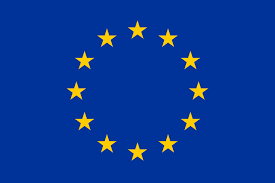5 things you need to know about Public Procurement in Digital Health

Pre-Commercial Procurement (PCP) is an EU-specific method for procuring research and development (R&D) services, using public needs as a driver for innovation. PCP challenges the industry from the demand side to develop innovative solutions. It enables public procurers to compare potential solution approaches and filter out the best possible solutions that the market can deliver to address the public need. Also, it creates a first customer reference that enables companies to create a competitive advantage in the market.
In the area of health, it provides a framework for consortia of health and care procurers across Europe, which are all facing the same common challenge, to apply for a grant to jointly procure new R&D-based knowledge. This may later lead to innovative solutions addressing the shared unmet need.
PCP is an important tool to stimulate innovation as it enables the public sector to steer the development of new solutions directly towards its needs. Here you have 5 things about PCP that you might want to know:
1. It is a competitive development in phases
In PCP, public procurers buy Research & Development services from several competing suppliers in parallel to compare alternative solution approaches and identify the best value for money solutions that the market can deliver to address their needs. R&D is split into phases (solution design, prototyping, original development and validation/testing of a limited set of first products) with the number of competing providers being reduced after each phase.
2. It is a mutual learning process
The PCP helps public procurers and suppliers to develop innovative solutions to societal challenges. It creates optimum conditions for wider commercialisation and take-up of R&D results. Moreover, it allows suppliers to verify and compare the performance of the different solutions in real-life operational conditions of the targeted public service, and to prove the innovation in the field testing. Early in the process, before the Open Market Consultation, the buyers’ group must describe its objectives and clearly define the unmet need for which it is seeking an innovative solution.
This is, in the end, teamwork: the procurers must identify the need, while the companies must find a potential solution to solve the identified need.
3. PCP creates a real innovation culture
The different phases of the PCP imply the mobilization of the different professionals at hospitals during the project, from the Managing Director to the clinicians, the innovation department, the procurement department, the IT department, and the financial department.
This creates a real innovation culture in the hospital where people share information between departments and learn new concepts and ways to buy solutions. Everybody is aligned, which encourages great synergies that result in better outcomes for patients.
4. It encourages the creation of growth and jobs
The PCP facilitates the access of new innovative players (e.g. startups, SMEs) to the public procurement market. It promotes the creation of consortia to jointly work in the development of the solution, which results in growth for all the suppliers involved during the process. The suppliers are not developing their technology from the idea but from the demand side, by creating a solution addressing a real need with its use cases. Suppliers receive a payment in each of the phases, which allows the sustainability of the enterprises involved in the solution while developing the solutions.
The PCP scheme can be advantageous to the European health care system, not least because public authorities and the private sector are both taking on the risks and benefits of the R&D.
5. It enables co-creation with end-users
As previously said, PCP is a mutual learning process for procurers, users and suppliers. The first phase in pre-commercial procurement may involve a pre-study or a solution exploration in close collaboration with the end-users. The specifications for the end product can be explored in open innovation ecosystems, like Living Labs. The development process is iterative and enables the stakeholders to experiment with new types of co-creation processes and methodologies.
Healthcare procurers that have the ability to facilitate these types of projects are those committed to carrying out clinical research that reflects the day-to-day problems of health care professionals. Usually, they have the capacity to mobilize professionals to achieve project success, especially if they have a clear orientation towards innovation with involvement in collaborative work with companies in the sector.
 Myriam Martín
Myriam Martín
Project Manager at Ticbiomed






